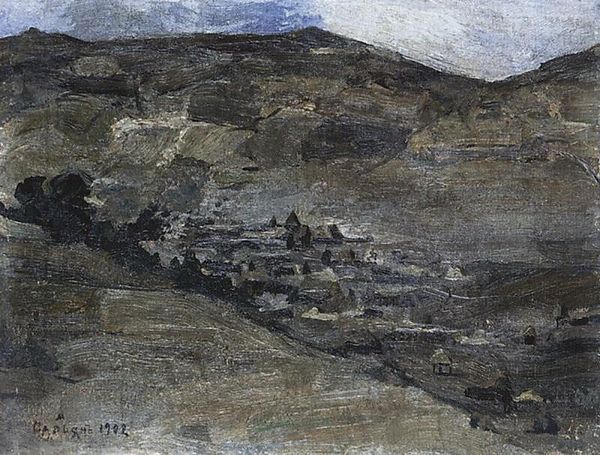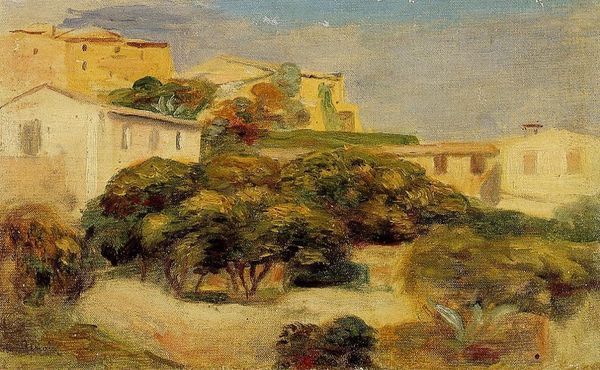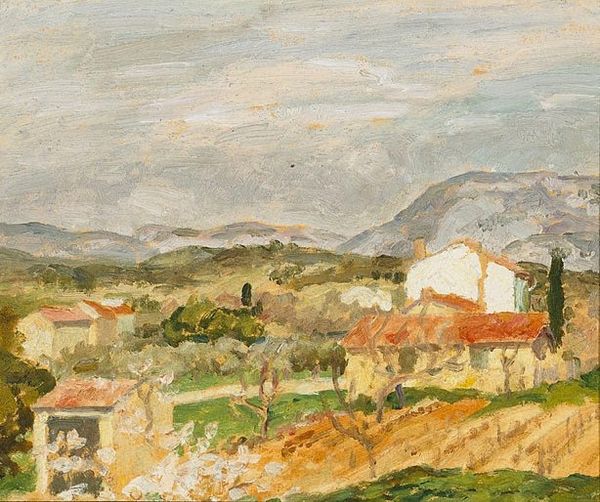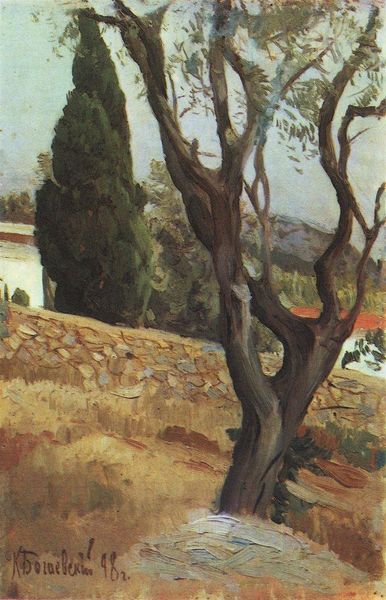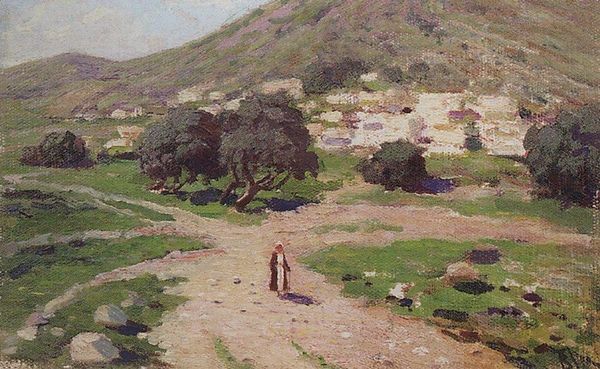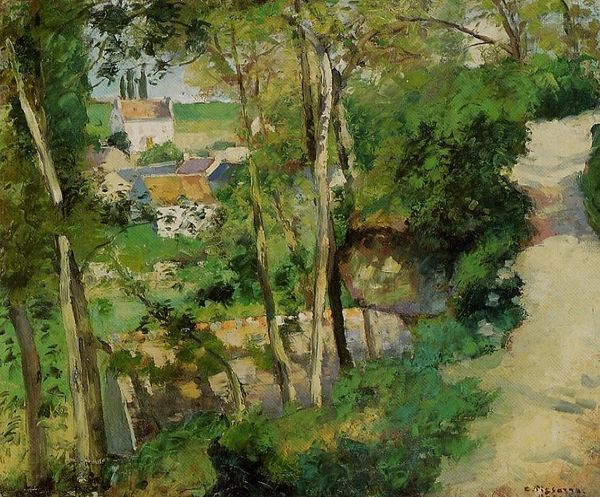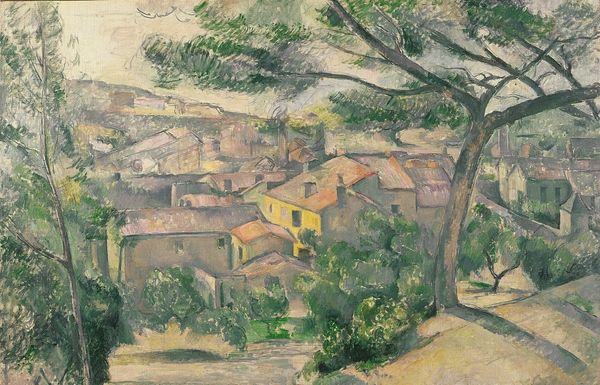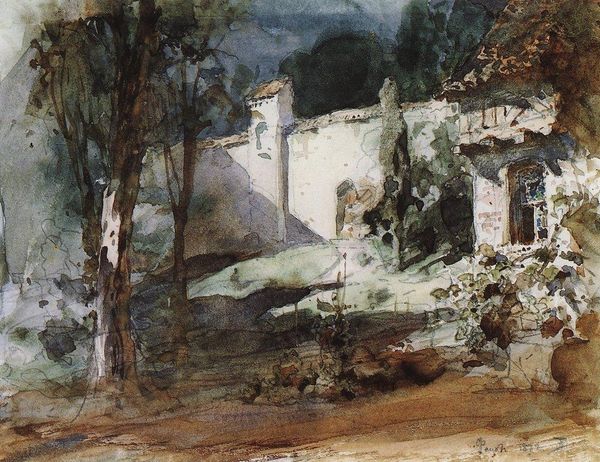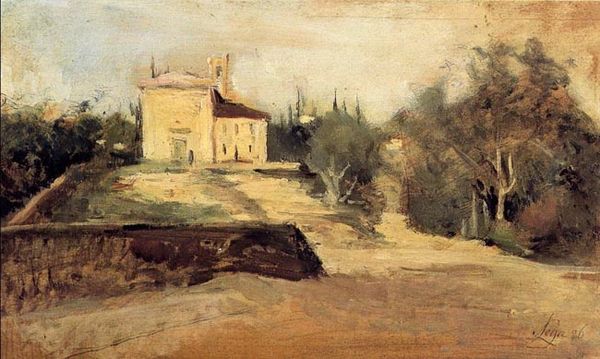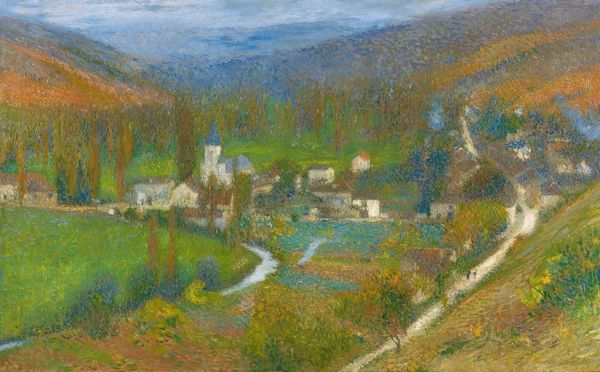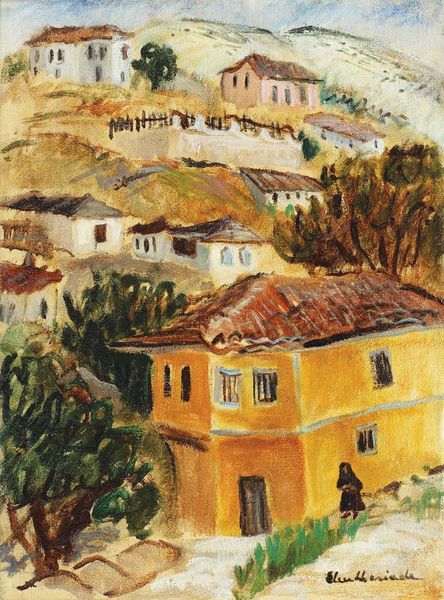
painting, oil-paint
#
painting
#
impressionism
#
oil-paint
#
landscape
#
oil painting
#
realism
Copyright: Public Domain: Artvee
Editor: This is Mariano Fortuny's "Granada Landscape," painted around 1871, using oil paint. I’m struck by its unusual perspective – we’re looking down at the scene. It almost feels like a snapshot, yet there's a serene, almost melancholic atmosphere. What draws your eye, Professor? Curator: Indeed, the vantage point is compelling. Fortuny masterfully orchestrates a series of receding planes. Observe how the verticality of the cypress and the buildings juxtapose with the horizontality of the distant mountain range. Note also the brushwork. Consider its syntax: loose, broken strokes in the foreground transitioning to a more delicate application of paint in the distant vista. What impact does that stylistic variation achieve? Editor: It definitely flattens the composition. The textured foreground sort of pops, emphasizing the depth by contrasting it to the distant mountain. But doesn't it feel a little…unfinished? Like a sketch rather than a completed painting? Curator: A relevant observation! Perhaps 'unfinished' presupposes a predetermined conclusion. Instead, consider it as a testament to process. Fortuny lays bare the architecture of representation. He calls attention to the act of seeing and painting, rather than merely replicating what is seen. It questions the illusionism that characterized much of 19th-century landscape painting. What impact might that artistic choice have on the viewer? Editor: It makes you focus on the individual elements – the brushstrokes, the colour – rather than trying to find a narrative or some grand meaning in the scene. I see it as pure form now, almost abstract. Curator: Precisely. The essence of the work resides in the visual experience itself. And, from a Formalist position, meaning resides in that structured viewing. Editor: That really shifts how I see it. Thanks, that was incredibly helpful.
Comments
No comments
Be the first to comment and join the conversation on the ultimate creative platform.
